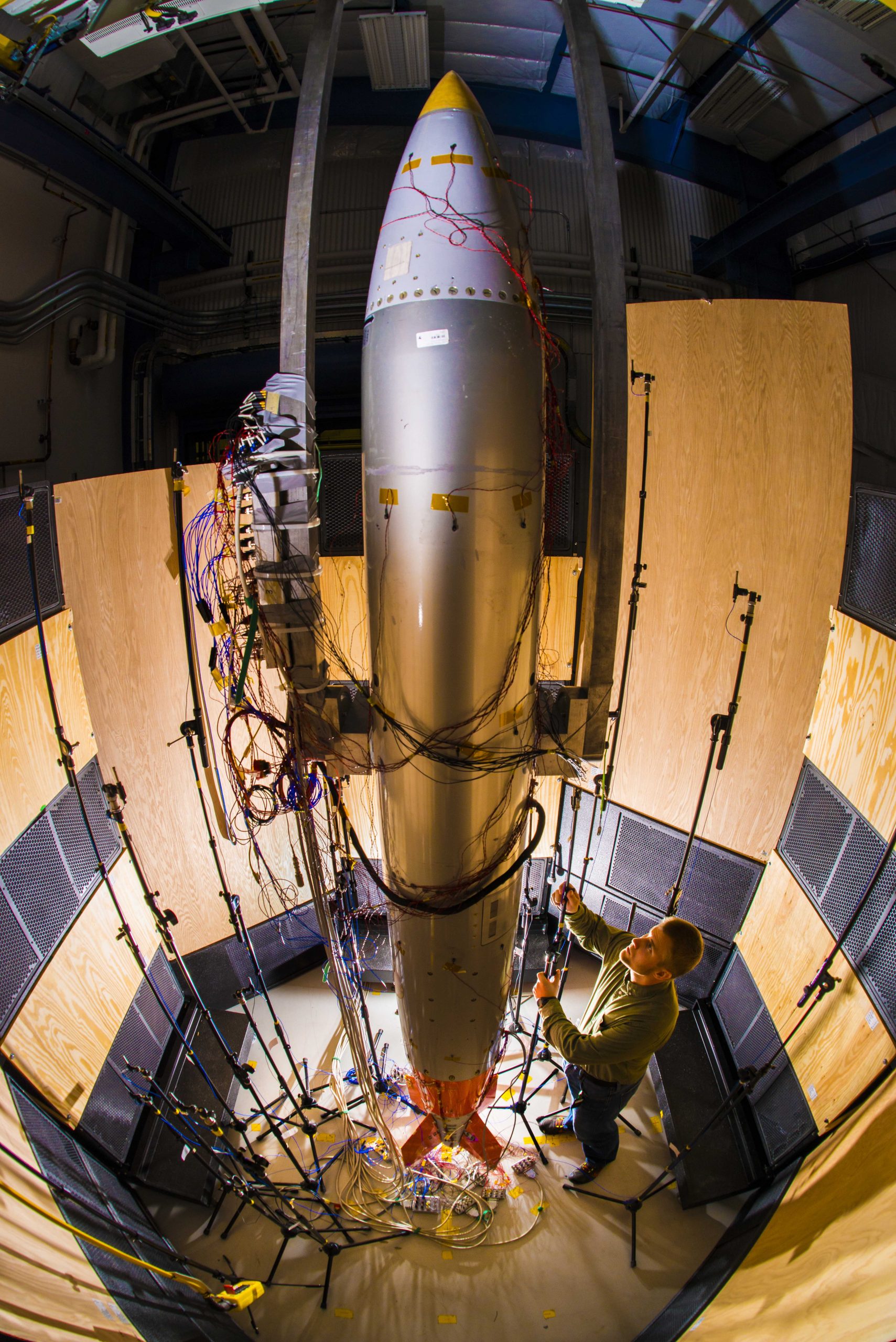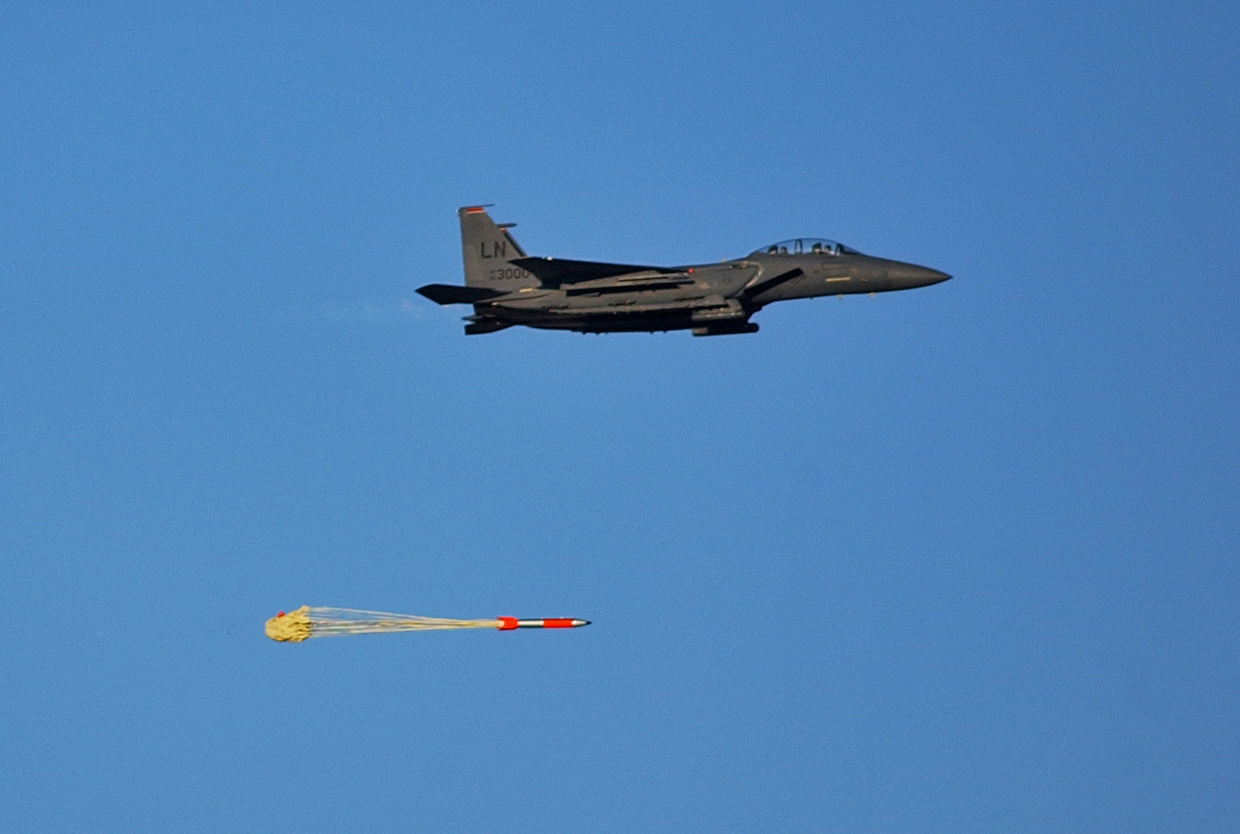ALBUQUERQUE, N.M. — Sandia National Laboratories is transforming how it assesses nuclear weapons in a stockpile made up of weapons at different stages in their lifecycles — some systems that have existed for decades alongside those that have undergone life extension programs.
Back when the United States was developing new nuclear weapon systems, weapons typically were either in production or were retired before they aged much more than about 10 years. The U.S. today is no longer designing new systems, so scientists and engineers refurbish weapons to ensure the stockpile will function as intended and that weapons are safe, secure and reliable.
Sandia is responsible for developing as much as 97 percent of a weapon system’s non-nuclear components. It has created ever-more sophisticated tests and computer models to qualify those systems under its stockpile stewardship role — certifying they always will work as designed when authorized by the president but will never work in any other circumstance, said Scott Holswade, deputy chief engineer.
The stockpile surveillance program assesses each nuclear weapon system to detect or anticipate potential problems.

Components of nuclear weapons age, and scientists and engineers address that through life extension programs or less comprehensive alterations. A life extension program refurbishes components nearing the end of their life, remanufacturing or redesigning them. Some components are reused by being requalified to go back into a weapon without change. Remanufacturing means using the original specifications to remake components that have aged. However, sometimes the original technology is no longer available, so Sandia redesigns parts using modern technology — think switching out vacuum tubes for solid state technology.
“A pediatrician does not look at the same things that a geriatrics expert would. The things you’re looking for in ‘pediatrics,’ the defects in design and production, are different than if you’re looking for aging effects late in its lifecycle,” Holswade said. “I think that’s been the big evolution of the program, to start implementing changes that recognize this, and change the [stockpile evaluation] program to optimize for each system, depending on where it is in the lifecycle.”
The U.S. last conducted underground nuclear testing in 1992 and has been in a moratorium ever since. Since then, Sandia has used non-nuclear tests, experiments and computer simulations to study environments weapons might face, such as vibration, radiation or extreme cold or heat. Sandia must design and engineer systems to handle those conditions and do extensive testing to make sure designs meet requirements established by the departments of Defense and Energy, said Toby Townsend, stockpile systems engineering senior manager. Once refurbished weapons enter the stockpile, Sandia conducts tests to assure the systems continue to meet requirements as they age.
Gauging a weapon’s lifespan is big part of stockpile work
“We’re often asked, ‘How much longer could the weapon potentially be good for?’ That’s a major part of the stewardship mission,” Townsend said.
When nuclear weapons were first developed, they were expected to be useful for a so-called protected period, the lifespan of the design. To mimic that lifespan, engineers use environmental test chambers to speed up conditions the weapon could face over time, a process called accelerated aging. They also do a multitude of tests on refurbished weapons coming into the stockpile, such as the W76-1, to catch possible “birth defects” due to design or manufacturing problems.
However, the question for a weapon in the stockpile for decades is different: What happens as it ages?
“That’s one thing we’re trying to get to: What are the risks and knowledge gaps, and focus on those rather than continuing to do things that aren’t returning a lot of differentiating information,” Holswade said.
Life extension programs and alterations test everything from individual components to nearly complete systems without nuclear material.
“There will be temperature cycling, there’ll be vibration, there’ll be shock, there will be radiation, there might be voltage changes, all kinds of things that the system is subjected to, done in accordance with a plan that combines testing with simulation to make sure we’re working through in a systematic way what’s required to qualify the weapon for operation,” Holswade said. “The goal is absolute certainty that the design as manufactured is good to perform.”
Many areas test systems, components
Jay Vinson, senior manager for integrated stockpile evaluation, said assessing non-nuclear systems includes laboratory testing, system-level flight testing of gravity bombs, cruise missile flights, ballistic missile flights and submarine-launched missile flights, all with the nuclear explosive packages removed. In addition, numerous sites, including Sandia, the Kansas City National Security Campus and the Weapon Evaluation Test Laboratory (WETL), test non-nuclear components.
Once a weapon is in production, the program must assure it conforms to the design, an example of an early lifecycle concern. “You can have production errors, or you might have missed something in the design process that only reveals itself as you get to higher volumes,” Holswade said.
As production ramps up, Sandia pulls units before they go into the stockpile to catch possible production errors or early-onset failures, Vinson said.
Weapons also are pulled from the field for tests later in their lifecycle, where they’ve been handled by military personnel and might have been on a submarine or a missile. Engineers want to study whether field conditions exposed a problem.

Some weapons from the field are built into joint test assemblies, mock weapons without nuclear materials but fitted with sensors and instrumentation to assess performance. Flight testing is part of the qualification process for refurbished weapons, and its main objective is to obtain reliability, accuracy and performance data under operational conditions. Scientists and engineers use the test data in computer simulations developed by Sandia to evaluate systems’ reliability and to verify they functioned as designed.
W80-1 joint test assembly
Last June, the W80-1 Air Launched Cruise Missile Surveillance Flight Test Program conducted a long flight of a joint test assembly to a target and performed arming maneuvers.
“In this case, the nuclear explosive package is replaced by the testing assembly, so the system won’t detonate, but it will function with all the Sandia componentry along that trajectory,” Vinson said. “The various safety functions and other weapon functions will occur as if it were a wartime environment. We need to assess that all of that works properly because it indicates we have a safe and reliable weapon.”
Weapons in some flight tests contain high explosives along with instruments that send out data during the flight until the explosives detonate. In other tests without explosives, additional sensors check that the detonation chain would have functioned. In all cases, the nuclear material is removed before the test.
Sensors in non-explosives tests send data during flight, but engineers also recover the system to gather more diagnostics. For B61-12 flight tests at Tonopah Test Range, telemetry data gathered during flight are verified at the range’s test operations center and main telemetry ground station, and transmitted to Sandia in Albuquerque.
Engineers do additional tests on components and subsystems for so-called “corner cases” — like the hottest day with the biggest shock condition or the coldest day with more vibration.
“We can’t fly every potential trajectory because you’re limited by where you can launch from and where you can land. We can’t fly every weather condition because you’re stuck with the weather you have when the flight’s scheduled,” Holswade said.
One problem with testing a non-nuclear system as a whole is that the system works or it doesn’t, and the test can’t always pinpoint something specific that might have worked, but only marginally. Weapons programs supplement system testing with component testing, allowing engineers to understand whether there were changes in the components.
Sandia’s large environmental test facilities can evaluate subsystems and components under all kinds of conditions. That doesn’t mean testing is easy — combining environments is especially challenging. Engineers might test how well a component works in a radiation environment and separately in a shock environment, but it’s difficult to combine radiation and shock testing, for example.
So researchers use simulation. First they perform experiments to gather information to anchor their models, then use those models to simulate thousands of different environments.
“It gives us a lot more confidence across the spectrum of environments,” Townsend said. “We would never be able to run that many experiments. As long as we continue to anchor our models with experimental evidence it allows us to have an ability to really assess that component in an environment that it may never be realistic to test in.”